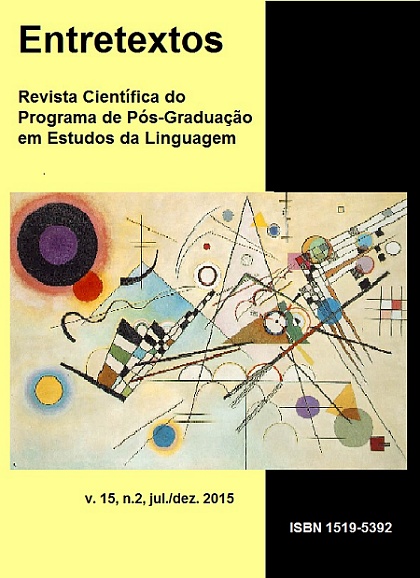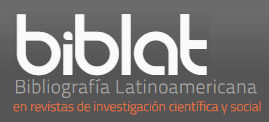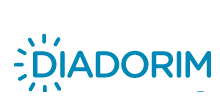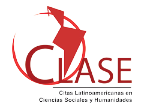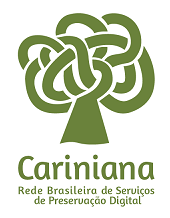The discourse genre popular verse: support for reading and writing at school
DOI:
https://doi.org/10.5433/1519-5392.2015v15n2p109Keywords:
Discursive genre, Popular rhyme, Instructional sequence.Abstract
This article aims at characterizing the discourse genre popular block so that this characterization may in future support the development of didactic sequences of reading and written production of this context. Hang on to the historicity, the conditions of production, circulation, thematic elements, enunciation, compositional and stylistic. The research was based on Bakhtin's concept of speech genres and authors that dialogue about the versification of oral poetry, and traditional literary forms in their various social events. Qualitatively, we investigated a corpus of 44 popular blocks collected from the Trova (1973), People Trova (1974), Popular Traditions (1976), ballad of Brazil (1972), Music, sweet music (1976), melodies of the ox and other parts (1989), Bumba-meu-boi sound and movement (2011), Witchcraft Music in Brazil (1963), Versification Romanesque Manual (2003), Manual of gaucho dances (1955) and + 1001 popular rhymes Grandma Anita (2008). The results show that the popular court in Brazil is a discursive genre that is characterized by being enshrined in the Portuguese mold, whose afeccionment occurs by a process to formulate, supported the principle of variation. Saving for "initial crutches" and the "final" or "buzzwords", many thematic source, but with adaptations already nationalized. It was concluded that these features of speech genre popular block in Brazil can support a reading and written production work in the classroom in both Elementary and High School contexts.Downloads
References
ANDRADE, Mario. As melodias do boi e outras peças. São Paulo: Duas Cidades, 1987.
ANDRADE, Mario. Música de feitiçaria no Brasil. São Paulo: Martins, 1963.
ANDRADE, Mario. Música, doce música. 2. ed. São Paulo: Martins, 1976.
BAKHTIN, Mikhail M. Estética da criação verbal. Tradução de Paulo Bezerra. 6. ed. São Paulo: Martins Fontes, 2011.
BHABHA, Homi K. O local da cultura. Belo Horizonte: Editora UFMG, 1998.
BRASIL. Secretaria de Educação Fundamental. Parâmetros curriculares nacionais: terceiro e quarto ciclos do ensino fundamental: língua portuguesa. Brasília: MEC/SEF, 1998.
CASCUDO, Luis da Camara. Vaqueiros e cantadores: para jovens. São Paulo: Editora Gaia, 2010.
CAVALHEIRO, Maria Thereza. Segredos do bom trovar: como fazer trova, exemplos práticos, antologia. São Paulo: João Scortecci, 1989.
CORTÊS, Paixão; LESSA, Barbosa. Manual de danças gaúchas. 5. ed. São Paulo: Irmão do Vitale Editores, 1955.
FERNANDES, Aparício. A trova no Brasil. Rio de Janeiro: Artenova, 1972.
FERREIRA, Aurélio Buarque de Holanda. Minidicionário século XXI escolar: o minidicionário da língua portuguesa. 4. ed. Rio de Janeiro: Nova Fronteira, 2001.
FRANCO JÚNIOR, Hilário. A Eva Barbara: ensaios de mitologia. São Paulo: EDUSP, 1996.
GOLDSTEIN, Norma. Versos, sons, ritmos. 13. ed. São Paulo: Editora Filiada, 2004.
LOPES-ROSSI, Maria Aparecida Garcia. Procedimentos para estudo de gêneros discursivos da escrita. Revista Intercâmbio, São Paulo, v. 15, p. 1-10, 2006.
LOPES-ROSSI, Maria Aparecida Garcia. Sequência didática para a leitura de cordel em sala de aula. Revista do GELNE, Natal, v. 14, n. 1-2, p. 145-164, 2012. Disponível em: http://www.gelne.org.br/. Acesso em: 25 out. 2014.
MARCUSCHI, Luiz Antonio. Produção textual, análise de gêneros e compreensão. São Paulo: Parábola, 2008.
MAZZURANA, Nelso Hahn. +1001 quadrinhas populares da vovó Anita. Porto Alegre: Imprensa Livre, 2008.
MOISÉS, Massaud. A criação literária. 6. ed. São Paulo: Melhoramentos, 1973.
OLIVEIRA, Maria Bernadete F. Contribuições do círculo de Bakhtin ao ensino da língua materna. Revista do GELNE, Natal, v. 4, n. 1, p. 1-5, 2002. Disponível em: http://www.gelne.org.br/. Acesso em: 25 out. 2014.
SANTOS NETO, Joaquim Antonio; RIBEIRO, Tânia Cristina Costa. Bumba-meuboi: som e movimento. São Paulo: Iphan, 2011.
SCHNEUWLY, Bernard; DOLZ, Joaquim. Gêneros orais e escritos na escola. Tradução de Roxane e Glaís Sales Cordeiro. Campinas: Mercado das Letras, 2004.
SCHOLES, Robert; KELLOGG, Robert. A natureza da narrativa. Tradução de Gert Meyer. São Paulo: Mcgrau-Hill do Brasil, 1977.
Downloads
Published
How to Cite
Issue
Section
License
Entretextos adota a Licença Creative Commons Attribution 4.0 International, portanto, os direitos autorais relativos aos artigos publicados são do(s) autor (es).
Sob essa licença é possível: Compartilhar - copiar e redistribuir o material em qualquer suporte ou formato. Adaptar - remixar, transformar, e criar a partir do material, atribuindo o devido crédito e prover um link para a licença e indicar se mudanças foram feitas.

